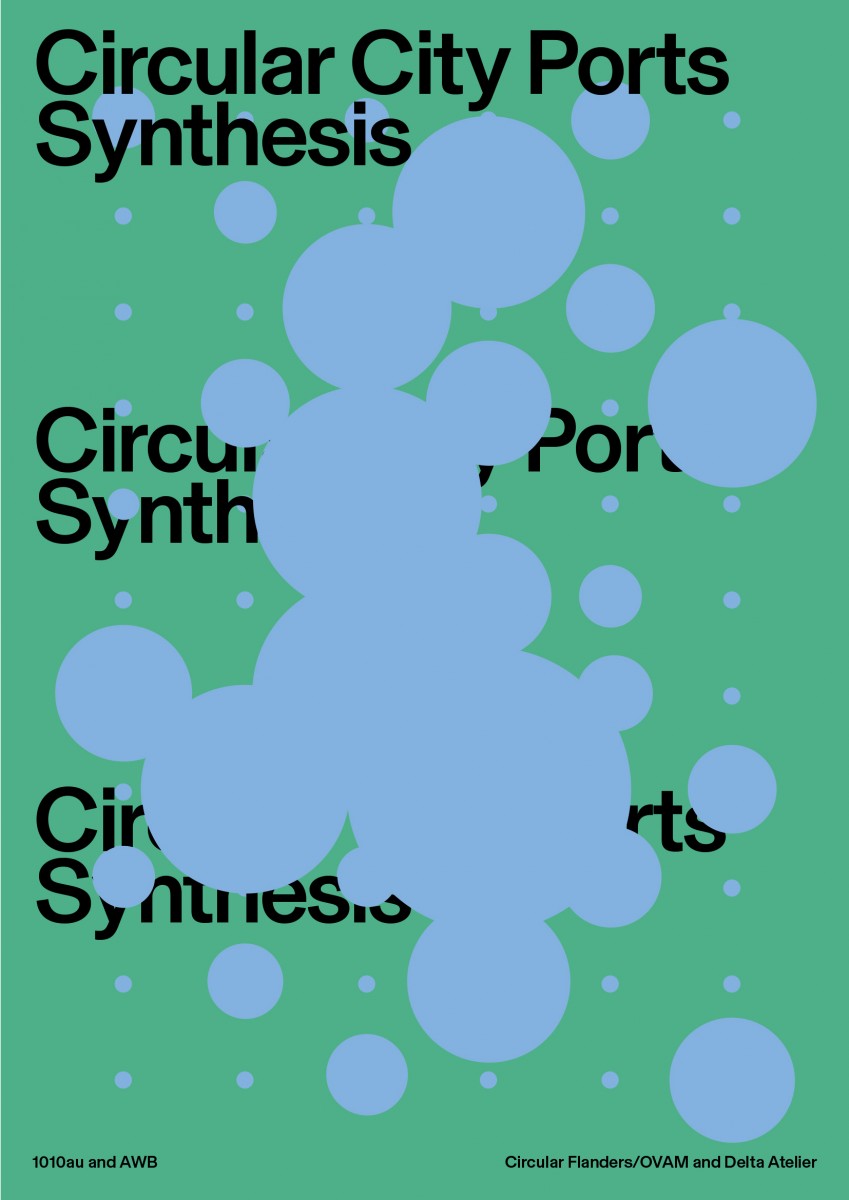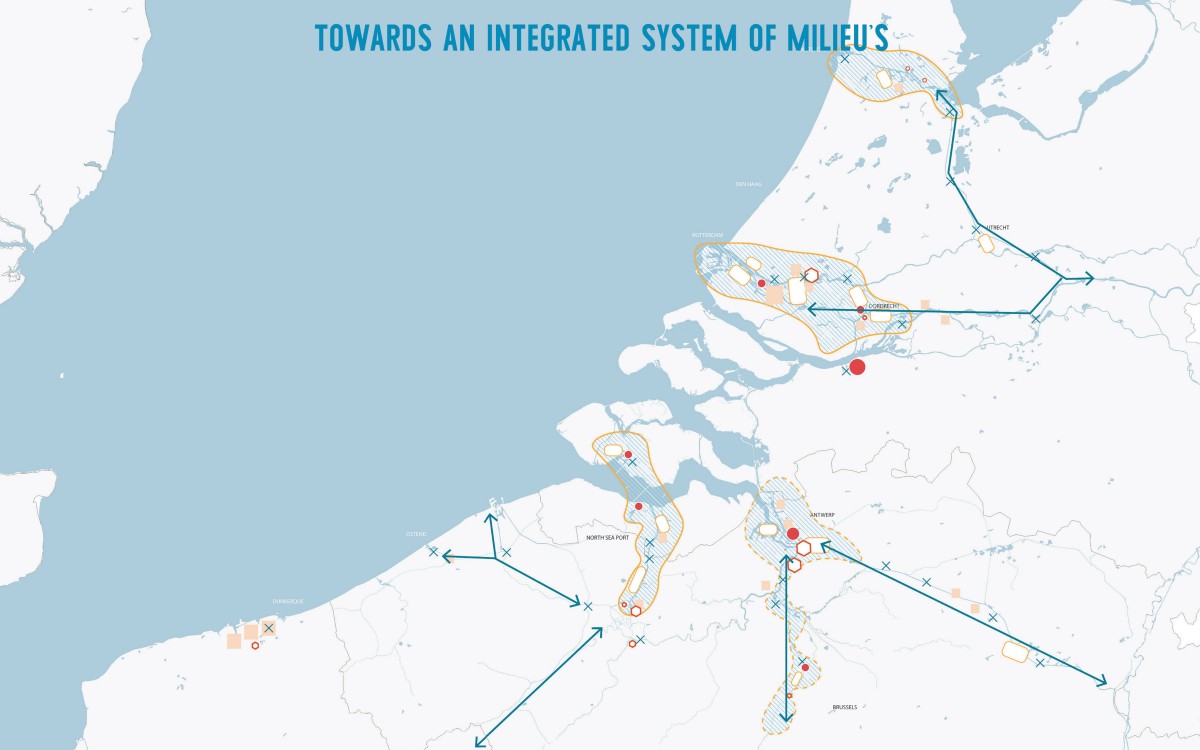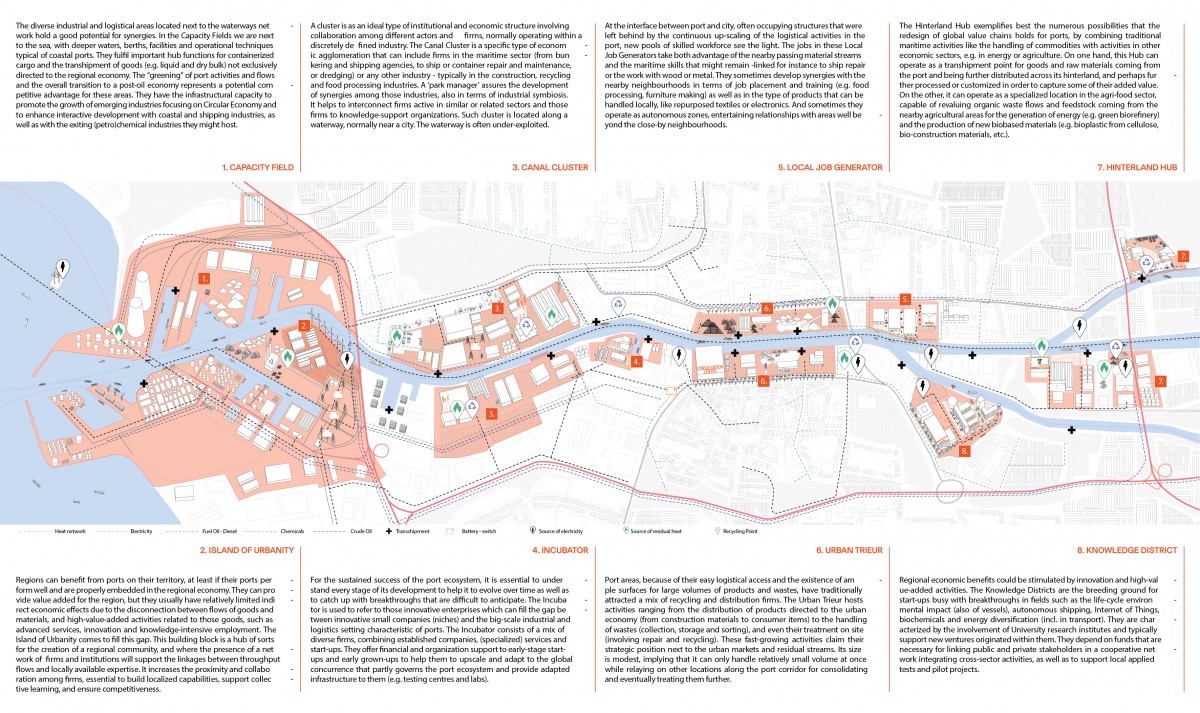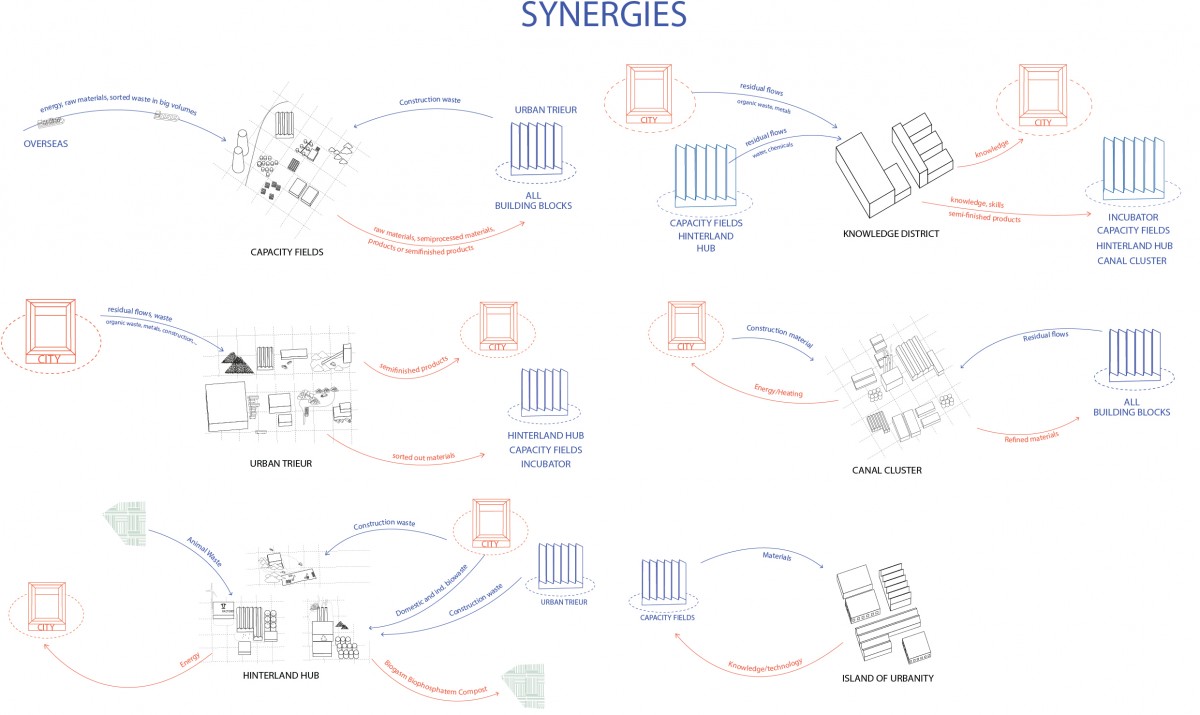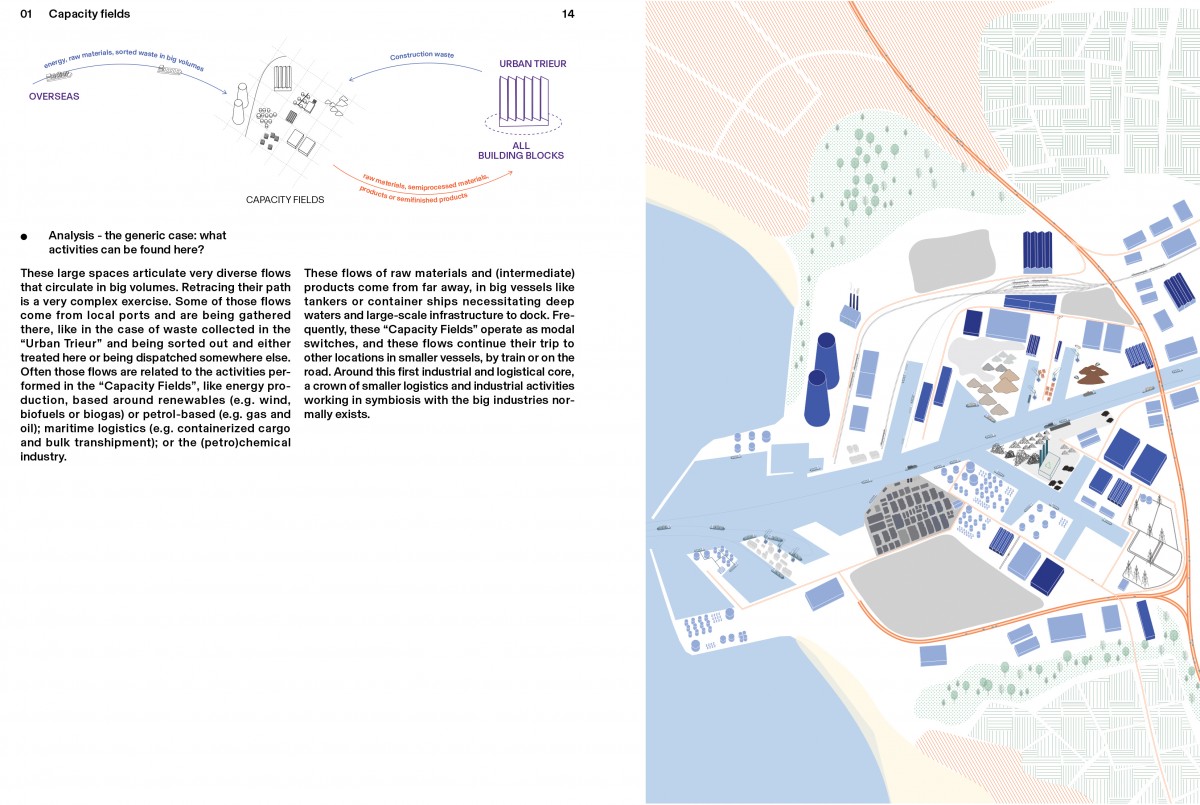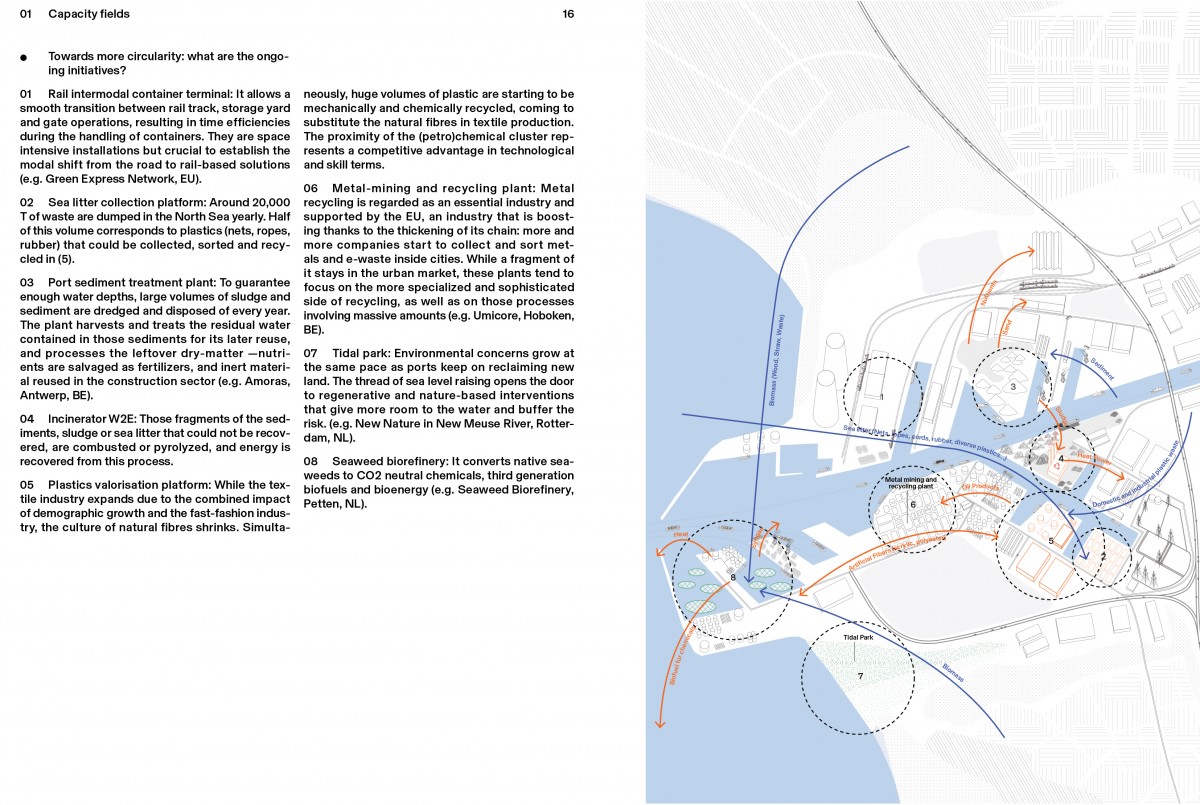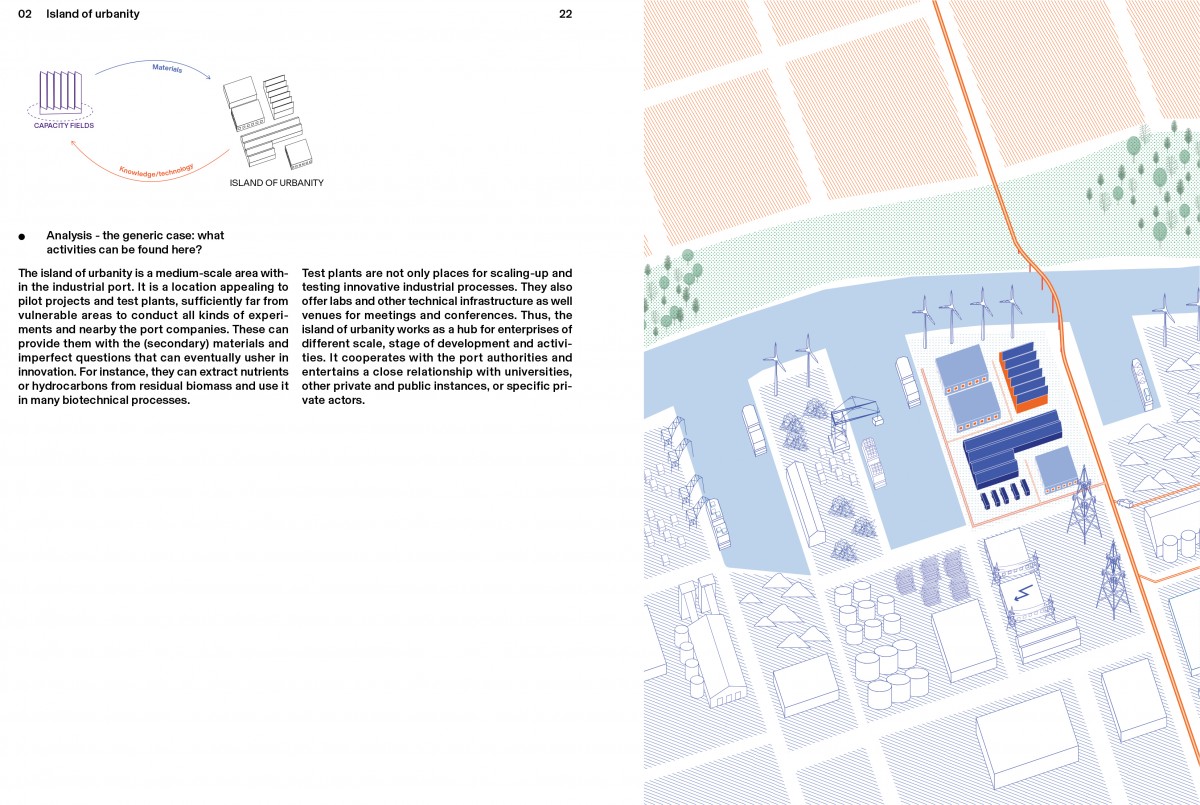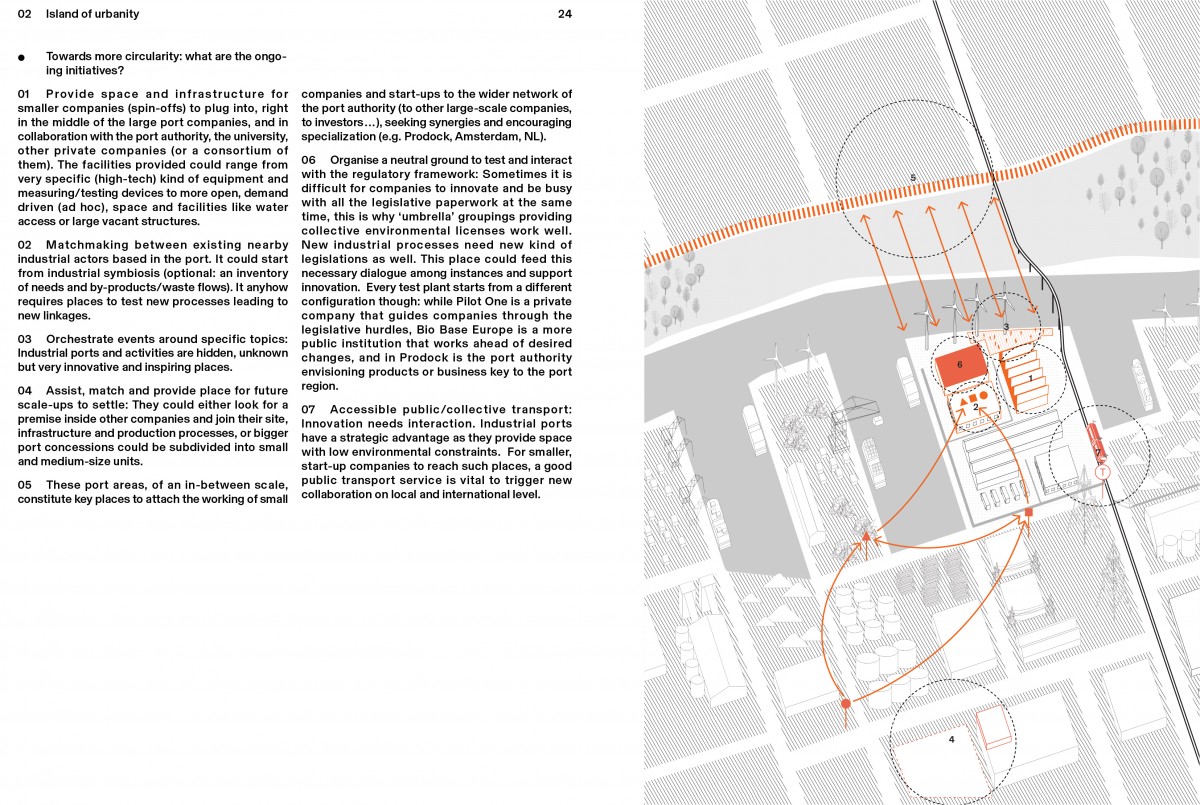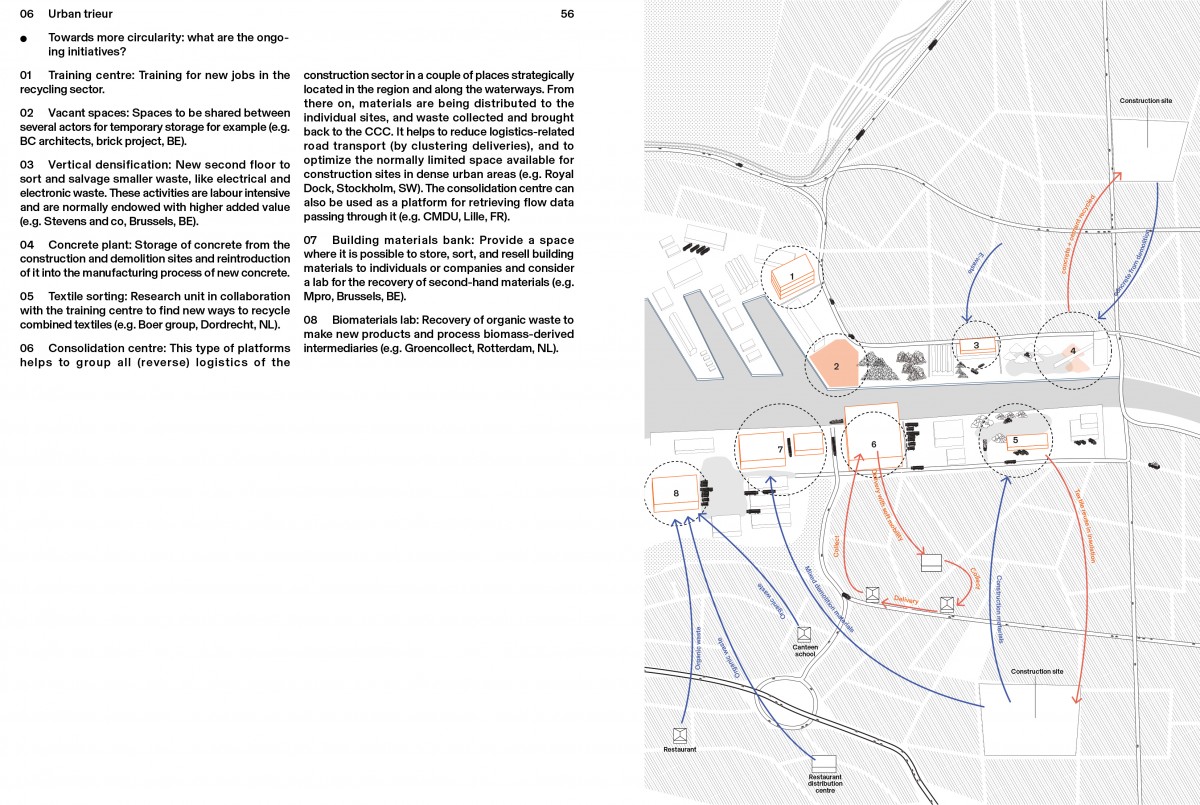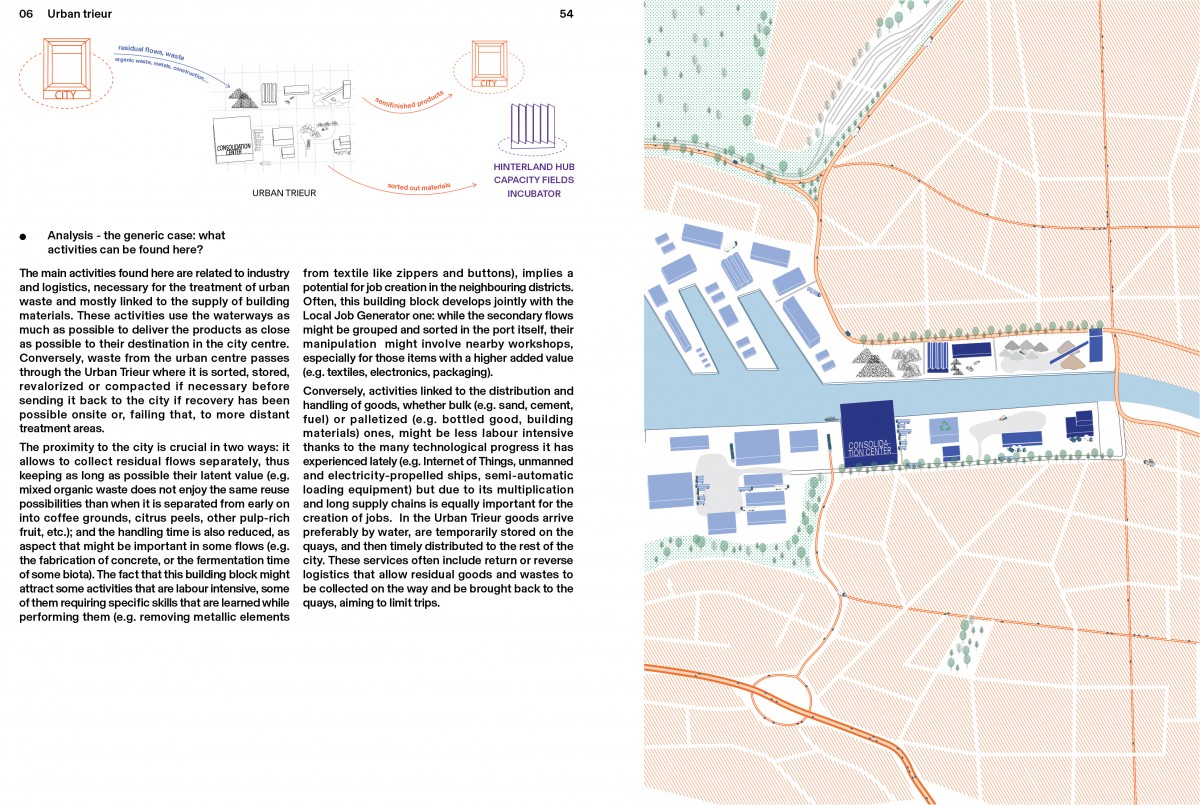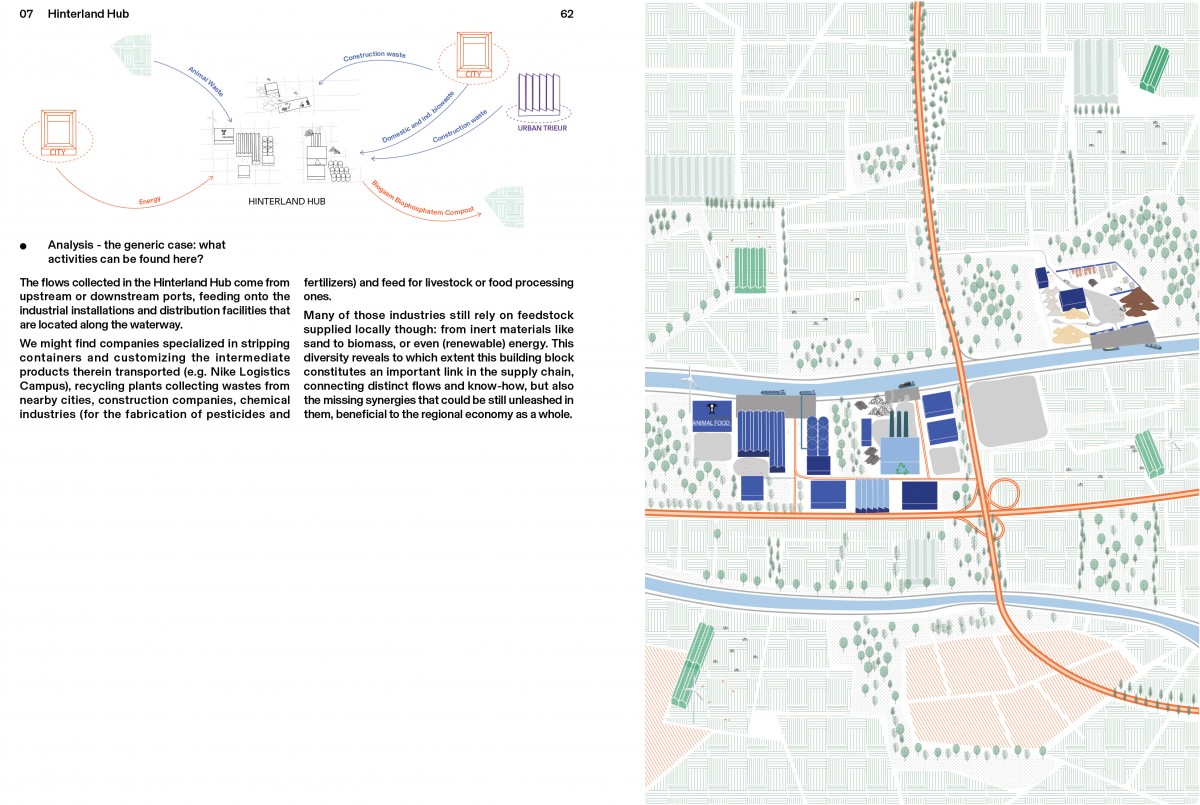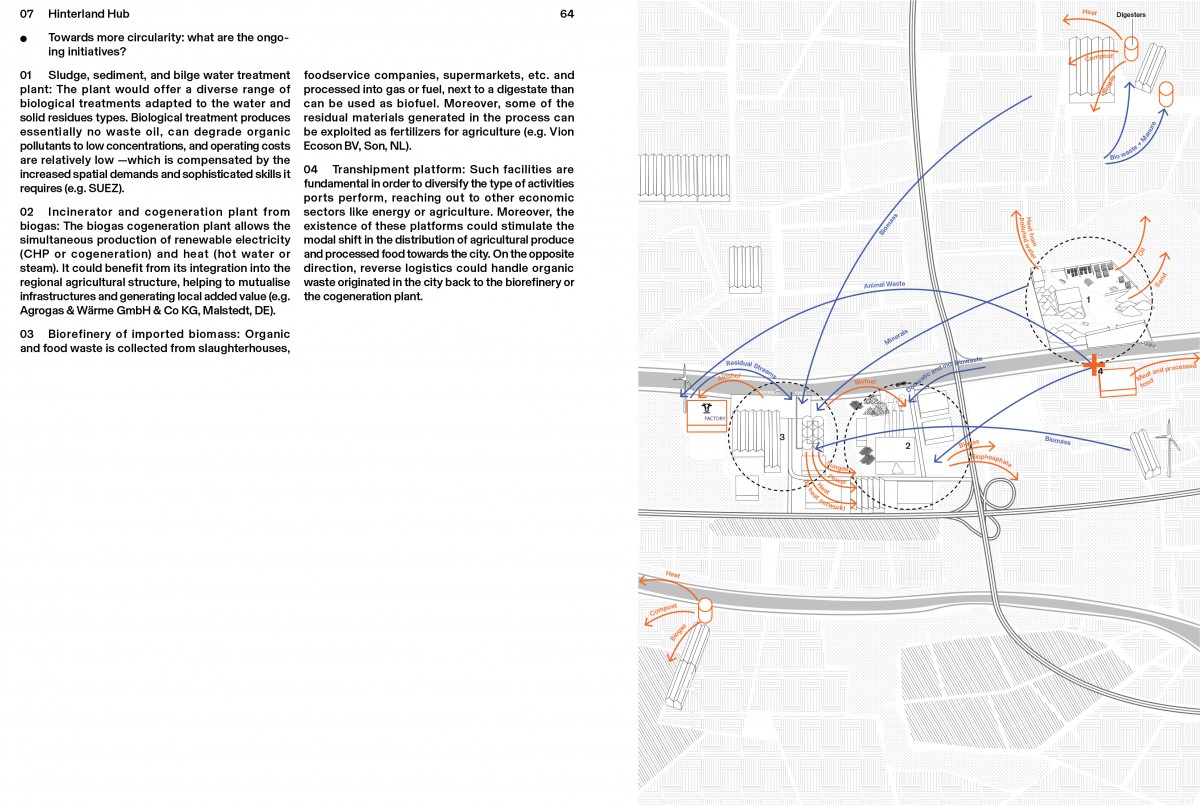The Exploratory trajectory on Circular City Ports positions itself within the Delta Atelier “Circular Ports” program. The hypothesis that ports will play a crucial role in the transition towards more circularity, is bundled within the Delta Atelier within an agenda of collective work programs, building new types of transformation projects from new coalitions. Within the “Circular ports” program, the planning authorities are working together on a Circular Main Frame (scale XL) on the Delta as a whole; a regional test is being set up around the North Sea Port based on cooperation between the provinces of East - and West Flanders and Zeeland (scale L); exploring the bridge between the port cities and the
ports, the “city ports” (such as Antwerp Eilandje II or Rotterdam Makers District) as catalysts of a new manufacturing and circular economy, together with OVAM / Circular Flanders, 1010au and AWB (scale M); the IABR and the municipality of Rotterdam together with the port authority are strategizing around the Rotterdam Makers District within Test Site M4H, towards the realization of a pilot for a circular building economy integrated with logistics functions in the Merwe Vierhavens, experimenting on the scale of the building typology (Scale S).
These different trajectories, each with their own coalitions, have met every six months since their first meeting within the context of the Delta
Atelier, to coordinate their independent tests. The support that the Delta Atelier offers them in this regard is in building a constructive narrative for the future of the Delta: if we start to link things together, we can actually start designing the desired living environment.
Circular city ports (aka CCP)
The exploratory research about Circular City Ports we have conducted so far, and articulated around workshops, interviews and benchmarking, concludes with a somehow paradoxical statement: there is no single way of being circular. Circularity isn’t easily replicable: what works somewhere might fail somewhere else. Circularity targets are multifarious: stretching from job creation to resource efficiency to ecological balance. Circularity is all-encompassing, and the change it anounces needs a systemic upheaval of our modern industrial system. Yet, it has to start somewhere, no matter where exactly along the value chain. And ports are important switches in the globalized value chain.
On the other hand, the multiple pathways City Ports can take to become circular keep on evolving, especially as City Ports themselves are subject to profound and rapid changes in their style of operations. But how to make this fuzzy concept operational without falling back to some sort of normative vagueness or intellectual laxity? If circularity refers to a concept with a fuzzy outline, it is nonetheless materialized: in fact, circularity can be considered a practice.
Thus, how can these isolated practices, further born of deeply distinct environments, steered by the actors concerned? We observed that these practices took place at different spatial scales along a Delta, and were governed by diverse instances, and were innovating in many different ways, from products to processes, from technologies to business models.
Instead of sticking to the practices, which seem unclassifiable since they are born of peculiar contexts, we attempted their stylization. In social sciences, a stylized fact is a simplified presentation of an empirical finding. We started from the cases we had analyzed in the first phase of the research (around 11 ports, and 50 circular initiatives) and we asked ourselves whether it was possible to identify similarities between them and across the ports. We so far identified 8 building blocks that can be recognized across the Delta ports —from sea port to inland port to corridors as a linear system of ports. Each building block constitutes a particular link in the total circular chain. The interaction among those blocks seems essential to further circularity and redesign our modern industrial system.
This categorization allows to better contextualize and root the circular initiatives we investigated in the previous phases. We also believe that it constitutes a big step forward for the stakeholders involved in the workshops, as it can help them identifying more easily which particular building block to address. This despite the fact of blocks being complementary to each other rather than exclusive. Likewise, it would be theoretically possible to convert a Delta into a circular system by assembling these building blocks. Not all these blocks are necessarily found in all ports studied. They do represent though the vibrancy of answers that ports and water-bound areas are already testing to further circularity, an evolution that is offen bound to the transition to a post-oil society.
